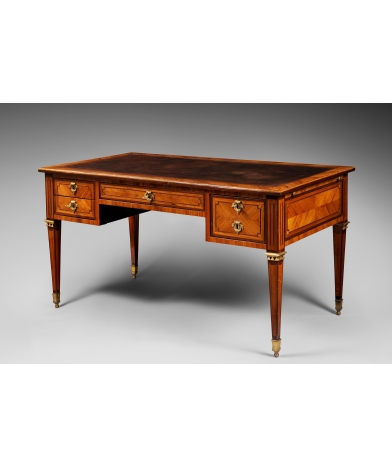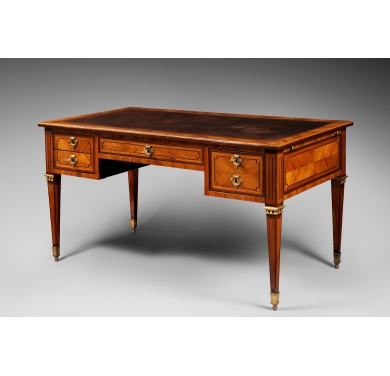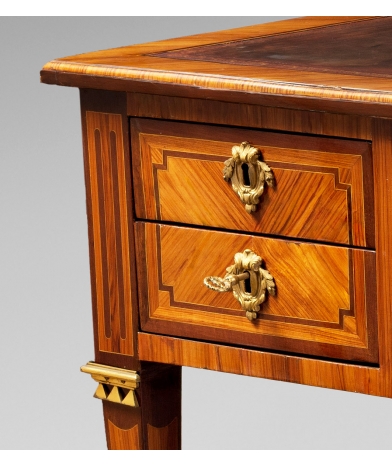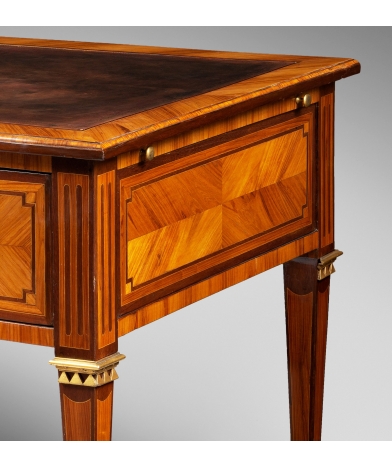Louis XVI period pedestal desk
Stamp of Ferdinand Bury
Dimensions : H. 78 x L. 147 x D. 78 cm
This desk is stamped by the famous cabinetmaker Ferdinand Bury, who became a master in 1774 in Paris. Specializing in important or ingenious furniture, Bury did not neglect the ornamentation of bronzes, the manufacture of which he often entrusted to Ravrio, an emulator of Thomire. Ferdinand Bury also collaborated with Riesener, as evidenced by a chest of drawers from the Louvre museum bearing both of their stamps.
This desk is in rosewood and amaranth veneer. This combination allows for a magnificent contrast of colors and brings refinement to the strict lines of the Louis XVI period. The square and elegantly tapered legs are veneered with this same combination of precious wood. Made in Paris around 1780, this desk shows the avant-gardism of Bury whose lines already foreshadow the following Directoire style.
Among the quality details of this piece of furniture, note the left box which is made up of two drawers without a crosspiece so as to achieve visual symmetry with the right box, made up of a single cash drawer. In terms of veneer, boxwood fillets are positioned with great precision between the amaranth and the rosewood, whether at the level of the drawers and false-drawers, simulated grooves on the uprights, and reserves on the feet . Finally, the sides have exactly the same marquetry ornamentation, and are executed with the same care.
Two side zippers allow you to enlarge the work surface. The ornamentation of finely chiseled and gilded bronzes consists of original elements, such as high clogs ending in balls, rich keyholes, and rings at the top of the feet whose bright gilding illuminates the dark amaranth provided at this location.
The rectangular top is covered in red-brown leather, beautifully made and gilded with small irons. Its overflow is visually perfect. This is an all-sided desk, also called a “middle”. Indeed, the marquetry and bronze ornamentation decorate the two wide sides, allowing this desk to be placed in the middle of a room; As always on Parisian desks, the drawers open on one side only, but the opposite side has perfectly simulated drawers.
This piece of furniture is in a superb state of conservation, without re-veneering or drilling, and without any structural modification. It was the subject of a beautiful restoration probably around fifteen years ago and its buffer varnish has a lovely patina. We can note some very small accidents visible in the photos, but the absence of a recent restoration allows us to offer this beautiful signed desk at a very attractive price.






